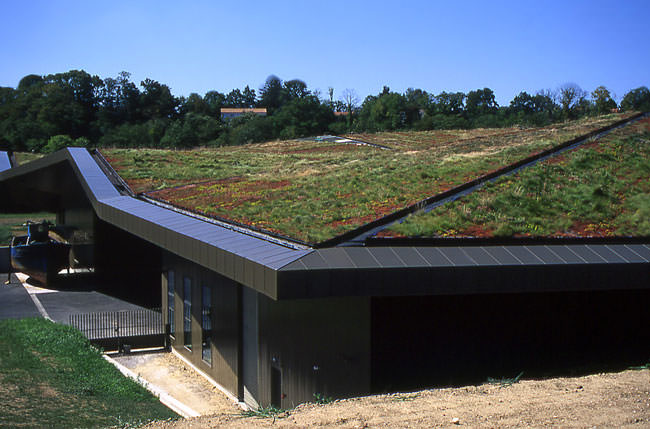
Recently funded by a Tier One Program Grant, Texas A&M University and the Department of Landscape Architecture and Urban Planning, have begun a green roof project on Langford Building A. The project is 3 year, $300,000, all-inclusive research opportunity, incorporating students from the Department of Horticultural Sciences and the Department of Atmospheric Sciences for a complete and well-rounded study. The purpose of the study is to determine how well plants in grow in southern environments like College Station green roofing and the feasibility of mass implementation.
Green roofs are roofing systems in both commercial and residential applications that are covered in vegetation either partially or completely. Recent research by industry entities like the National Roofing Contractors Association and roofing material manufacturers suggest that vegetation native to the roofs surrounding environment performs best.
Setting a Baseline Standard
The student lead effort is using a type of vegetation known for its ability to maintain water and last through long periods without rainfall. In addition to learning and receiving direction instruction from faculty leaders Don Conlee, Astrid Volder, and Bruce Dvorak, students designed and built the roofing system and structures themselves. The involvement from several different departments helps to collect and analyze all available data related to the construction of the roof, the benefits (efficiencies of green roofs), the environmental conditions that affect the vegetation on the roof, and the stress of the green roof on the entire building itself.
The architecture department supports the overall structural components and design of the green roof system. The design and implementation of the green roofing system is both an art and a science. The architectural students provide that balance to the project.
Both landscaping and horticulture students head the mini ecosystem they have developed on the roof. They help determine which plant types thrive best under varying Texas conditions.
Atmospheric science students contribute monitoring systems that measure the effects of wind, temperature, humidity, and pressure on the green roofing system. The monitoring of the green roof is absolutely crucial in the study, as the research in the study will find what factors determine the success of the vegetation; how much sun, how much rainfall, and soil conditions.
Why This Research Is Needed
Research by tier one schools like Texas A&M University provides critical information for industry wide implementation. Green roofing has been widely used for hundreds of years by humans. However, it hasn’t been until the last several years that serious research has been done into the efficacy of green roofing.
This research shapes decision making and design implementation for the entire roofing industry. Such objective data will help College Station roofing companies like Schulte Roofing continue to implement the best roofing solutions for its customers and the local economy.
Research from grants and opportunities also help Schulte Roofing design implementations and solutions that provide both cost savings in the form of energy efficiency, but also revenue generating combinations like green roofs and solar collection.
For more information about green roofing, current research, and the types of vegetation that should be used in green roofing around the College Station area, contact Schulte Roofing, The Home of the Bulletproof Roof® Guarantee.
